Having completed a British/Commonwealth platoon and supports for the early stages of the war in the Far East I have also created a platoon to represent the same force as it would appear in the later stages of the war. These cover the British in Burma as well as the Australians in the Pacific. By this stage of the war the khaki drill tropical uniform and shorts had been replaced with jungle greens. The armies had also been better supplied with modern equipment, although quite often that more 'modern' equipment was materiel that had become obsolete in other theatres.

Infantry continued to be issued with a steel helmet. In addition the Australians were issued the slouch hat and the British the almost identical bush hat (which had been standard tropical headwear for units in East and West Africa before the war). While a metal helmet provided the most obvious protection it was not always the preferred headwear for many soldiers.
The helmet chin strap could be noisy if not firmly attached and made it difficult to move quietly in jungle. The slouch or bush hat was more comfortable to wear and quieter. The one pictured below is on display at the Australian Army Infantry Museum.
From what I can see in photographs soldiers appear to have adopted both types and there is plenty of pictorial evidence that both slouch/bush hats and helmets were worn in combat.
Not surprisingly the hats soon started to show signs of wear. An example of just how extreme that could be can be seen in this hat worn by a major in the second Chindits expedition and now on display in the National Army Museum.
In 1943 the British formed 14th Army in Burma and I think it’s important to acknowledge that it was a multi-national force from a number of commonwealth countries, including the Indian Army and units from West and East Africa. While my initial collection for this theatre is extremely euro-centric I'm looking forward to adding more platoons, particularly for the Indian Army which played a very significant part in the campaign.
The British for Burma are based on the AB Figures range for the Mediterranean theatre, however these work just as well for the Far East. They also work for Australians, although I have a specific set of figures for them from the Eureka Miniatures range (who also produce the bulk of my Japanese figures). The AB Figures are all in steel helmets.


The British infantry platoon in the Far East was structured in a very similar same way to its counterpart in the European theatre, with three sections making up the platoon. Each section commanded by a corporal armed with a rifle and composed of a six man rifle team (where two men are armed with submachine guns) and a three man Bren gun team.
To distinguish the junior leaders from the rest of the men under their command I've included a few rocks on each base.
The Eureka Australians are available in both slouch hats and helmets. The slouch hat figures could also be used as Chindits in Burma and with many similarities in equipment and uniform I don't plan on being overly fussy about using them in that role.
I've gone for a fairly contrasting colour for the webbing against the jungle green clothing but based on the picture below taken at the Australian Army Infantry Museum of a uniform that was worn in New Guinea that contrast seems close.
The British were dressed in something very similar as shown in the picture below from a display at the Imperial War Museum.
The Eureka figures in helmets provide a similar range of poses to make up the sections.
I much prefer the sculpts of those in slouch hats over those in helmets. Some of those latter figures have strange proportions, particularly their heads, which seem too large and this is exacerbated by their small helmets. I think it's quite apparent here when you compare the AB Bren team (on the left) with the equivalent from Eureka (on the right).
I had hoped to be able to mix the two sets of figures together freely but I will most likely try to keep the different types of sculpts grouped together in their sections.
Eureka also do prone bren gunners. They don't have a specific figure for the No2, the loader, so I've based the figure individually and will use a prone rifleman as the No2.

A kneeling rifleman makes up the third member of a section's LMG team.
Wargames Foundry have a limited range of 20mm that were sculpted by the Perrys. I really like their figures and it's a shame it is such a small range, however I found their set of Australian Bren and Vickers teams a useful addition, especially as the Bren teams have a suitable figure as the No2 with the Bren team.
The figures match very well in size with those from Eureka.
The platoon is commanded by a Lieutenant (senior leader), who could be armed with a Thompson SMG or a pistol. I have similar issues with the Eureka helmeted figure in this case too, but it is the only officer figure that I have with a pistol (for now at least).

The platoon HQ was made up of the Lieutenant and a platoon sergeant with a submachine gun. The HQ included a two man 2" mortar team and an anti-tank team, which could be armed with either an anti-tank rifle or a PIAT. While the anti-tank rifle was often sufficient to deal with Japanese tanks the PIAT was also found to be extremely useful for targeting bunkers, making it a useful addition to the platoon’s arsenal.
The Australian War Memorial Museum has a Boys Mk1 anti-tank rifle on display:
I have these teams with slouch hats or with helmets. Those wearing helmets are from AB Figures and those in slouch hats are from Capitan Miniatures.
AB do a very nice PIAT figure that I've mounted individually as there isn't a dedicated figure for the loader. Instead I will use a prone rifleman to make up the second member of the crew.
When kept together there is less of an issue with the Eureka figures. The section leaders (junior leaders) are based on the same 20mm rounds as the other ranks, but they are appropriately armed and a few rocks on the base help to differentiate them from the rest of the section.
As with all my leader figures, the senior leaders are on small rectangular bases to help set them apart from the junior leaders.
172 Scale Miniatures have been a source of many Japanese figures for me and they also produce a range of Chindits. In most cases those figures could be interchangeable for 14th Army, Chindits or Australians. Their command pack includes a suitable senior leader, a junior leader, a forward observer/radio operator and a medic.
These figures are slightly smaller than the Eureka and Foundry ranges but only marginally so.
AB also do a kneeling figure with a rifle grenade. That's a weapon that seems to have seen more use in the Far East than in Europe.
The Australians often gave the section submachine gun to the soldier most likely to use it aggressively, rather than automatically give it to the section leader. As the war progressed it was not uncommon to have a second submachine gun in a section and so I wanted to have figures that were so armed but not marked as leaders. Eureka have figures with the Australian designed Owen gun which began to make an appearance from 1943 (and proved very popular, the Australians using it until the 1960s).
The Australian War Memorial Museum has a good example of the Owen Gun and a Thompson on display:
An Owen gun, Thompson and a lesser known Australian design - the Austin gun - are also on display in the Infantry Museum. The Austin (in the centre) drew inspiration from both the sten gun and the German MP40, however it proved less popular with the Australians than the Owen gun.
That covers the basic platoon, then there is the range of support options. Forward Observers are a mix, on the left from Capitan and on the right from AB.
I have a sniper and a medic, both figures from Capitan.
Eureka do a Vickers MMG although it comes with only two men in the crew and so I will use a mix of prone and kneeling riflemen to make up the numbers.
The Eureka crew are only available wearing steel helmets and so I've made use of the Wargames Foundry 20mm range once again for two more guns and crews, this time in slouch hats. Overall I prefer these latter figures over the Eureka ones, which suffer from the large heads and small helmets.
In terms of size the figures match up well enough with those from Eureka.
Here is a Vickers in the Canadian War Museum.
The two pounder AT gun was still capable of penetrating most Japanese tanks and so remained in use in the Far East throughout the war. This is the kit from Zvezda with a crew from Wartime Miniatures.
This is the 2 pounder in the Australian War Memorial Museum.
With the introduction of the Sherman in 1942, the two earlier American tanks, the M3 Lee and Grant which had both seen service in North Africa had become obsolete for use in Europe. However they could still serve a very useful role in other theatres and so were sent to Burma.
This is a Lee using the old Hasegawa kit.
Tanks in service in Burma were often marked with very large Allied stars, this was for aerial recognition. Once in service the tanks became covered in dust and there was concern that the stars would not be visible. The army tried a number of fluorescent aerial recognition markings but the RAF urged strongly for the retention of the white star. I've based the markings for my Lee on the photograph below.
There is a Grant version with the counterweight on the barrel of the 75mm gun, the one immediately below is in the Imperial War Museum collection and the second is at the Tank Museum at Bovington.
While the first two are painted in colours for North Africa, the one below at the Tank Museum at Saumur is closer in appearance to how they would have looked in Burma. Worth noting that the 1st Australian Armoured Division, which was formed in Australia in 1941 was equipped with Grants. The main purpose of the division had been the defence of Australia in the event of a Japanese invasion and with little need for massed armour in the Pacific campaign the division was disbanded in 1943. So while the Australians were equipped with Grants they never took them into action in the Pacific campaign.
The Australian Armour and Artillery Museum has a version of the Lee. This is a later model with the side doors removed.
The early version of the M3A1 Stuart had served in 1942 in Burma and with the Australians in New Guinea. They still had a role to play later in the war and while in Europe they were replaced with the M3A3 version, the M3A1, featuring a new cylindrical turret, saw service in Burma. This is from the Plastic Soldier Company Stuart set which allows you to build a variety of early and later versions (the earlier M3A1 with the hexagonal turret can be seen in the post on my early Far East forces).
This one is on display at the Tank Museum in Bovington.
The Australian Armour and Artillery Museum also has one in working condition.
The Australians found that the Matilda II, another tank now considered obsolete for Europe, could be put to good use in the fighting in the Pacific, where some were fitted with a 3" howitzer and designated the Matilda II CS (close support). These were often assigned to the troop leader, while the remainder had the original 2 pounder gun. This is the model from S-Models and a lovely kit it is too. The crew figures is from AB.
I made a few additions and added the two storage containers on the front inspired by this photograph.
The Australian Armour and Artillery Museum has a fine example of one painted up in colours for the Pacific campaign.
The Australian Army Museum at Bandiana has a Matilda standing guard at the entrance.
The Matilda below is in the collection at the Tank Museum Bovington, although I'm a bit sceptical about their version of the Caunter scheme.
The Tank Museum at Saumur also has a version, this time with a slightly different interpretation on the Caunter scheme, however I think their version of pale blue should be a silver grey (as should Bovington's).
The mainstay of British armour was the Sherman, the main tank in most of the Indian Army armoured regiments. These three are the M4A4 (Sherman V to the British) from the Plastic Soldier Company set. The crew figures all comes from AB.
Once again it carries the large Allied star prominently on its side armour, something evident from period photographs.
I've found this 32 page booklet on Shermans in the Far East very useful as it is packed with information, images and TO&E.
There is a good example of a Sherman MkV (as the British referred to the M4A4) in the Imperial War Museum.
This is also an M4A4 in the Canadian War Museum.
One addition falls into a category of its own - an armoured bulldozer, as it is neither an AFV in the true sense nor could it be classified as a soft skin. This D7 Armoured Bulldozer from 172 Scale Miniatures will have to stand in for a number of different vehicles. The Chindits used a smaller version that could be delivered in a glider. This version was used by the British, but mainly in Europe for the D-Day landings, however they were also used by the US Marines in the Pacific.
The Indian Pattern Carrier was a version of the Canadian CMP truck chassis with an armoured body. These were manufactured in India, hence the name (although some were also manufactured in New Zealand as well). This one is from 172 Scale Miniatures with crew from the spares box.
Talking of CMP trucks here is one from the Plastic Soldier Company set. Crew figures in this set come in both tropical and European uniforms.


Unsurprisingly, given their place of manufacture, there is one in the Canadian War Museum in Ottawa.
The
Far East Handbook for Chain of Command includes rules for air attacks. Much like a pregame barrage or the Stuka Bombardment rules in the
Blitzkrieg 1940 Handbook these air attacks are abstracted and there is no need to represent them on the table. However that sort of thing has never stopped me and if you read any of the AARs for games in our
Many Rivers to Cross campaign you will see I've used a model of a Stuka to represent this pregame event visually. I intend doing the same with our Far East games and with that in mind I have made a couple of aircraft. The first is a Hurricane IIc which can be used for the Hurribomber attack in the rules. This is a 1/72 kit from Airfix. I've used decals from a set from Xtradecals.
The second is a P47D Thunderbolt. This aircraft was used by the RAF only in Burma, where its rugged build was well suited to the conditions. This is a 1/72 kit from Academy.
While I was making the Hurricane I couldn't resist also making the old Airfix Commonwealth Boomerang from their Vintage Classics range. The kit was first released in 1965. For the latest release Airfix included a new set of decals and, despite its age, it comes out reasonably well with a bit of love and attention. This could be used by the Australians in a ground attack role later in the war.
As always there are more additions and I particularly want to focus on armoured cars and carriers next. Meantime I think I have enough to play a number of actions to cover this later stage of the war in the Far East. There's certainly plenty of terrain ready!



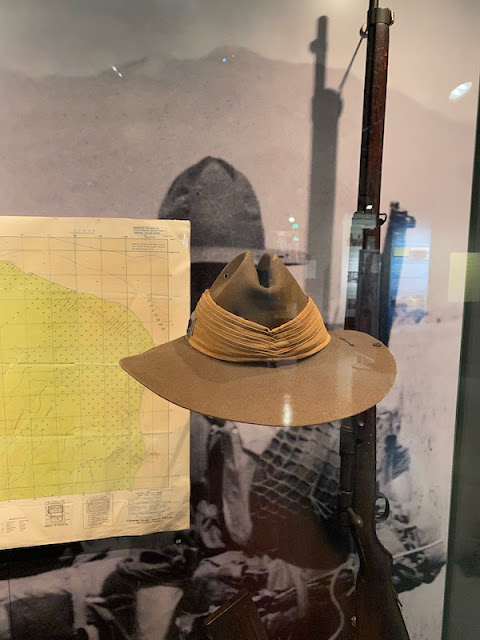
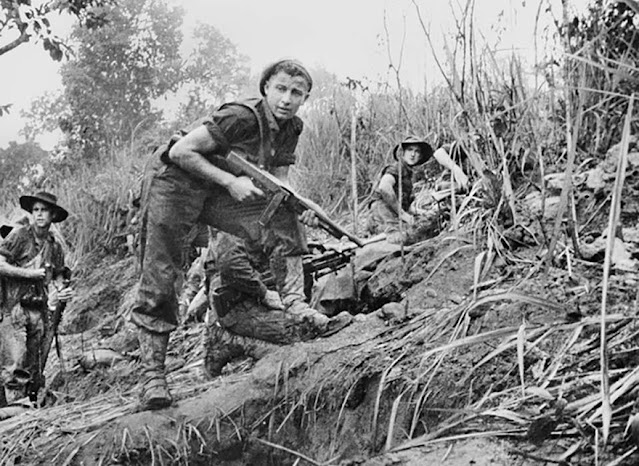






















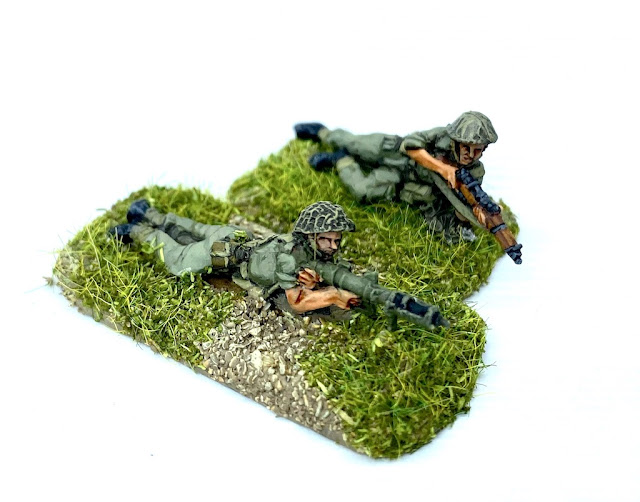
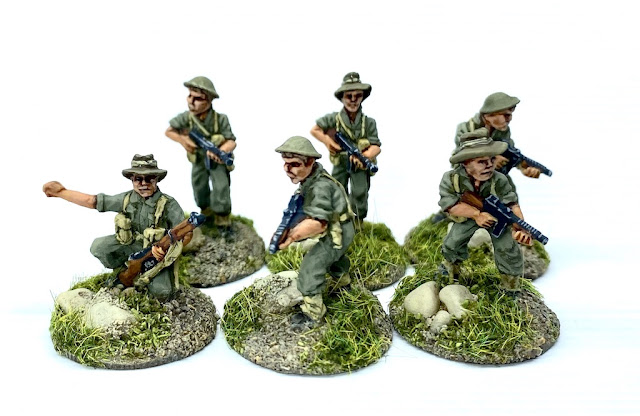







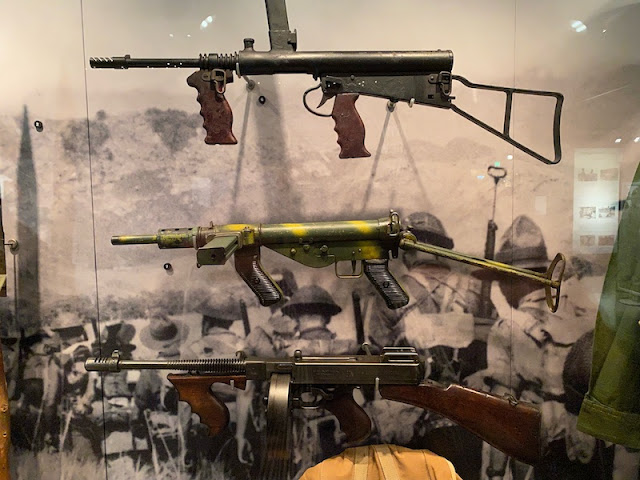





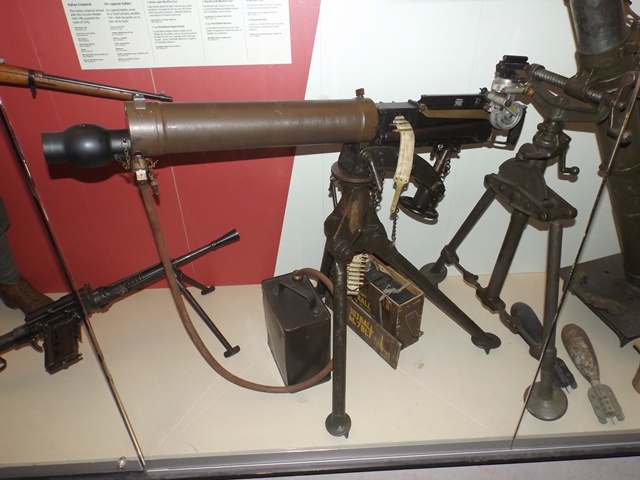


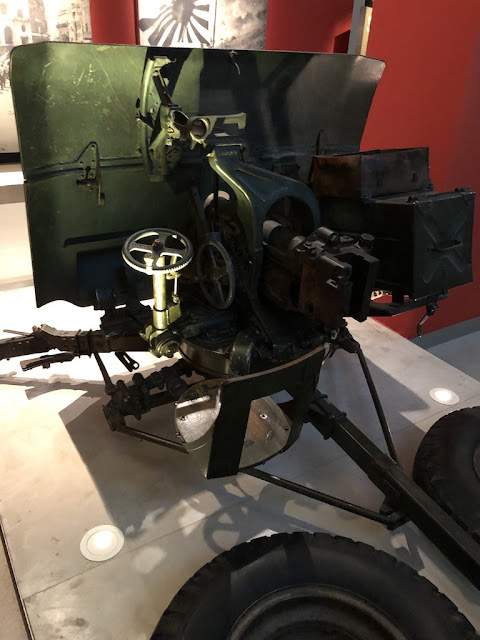






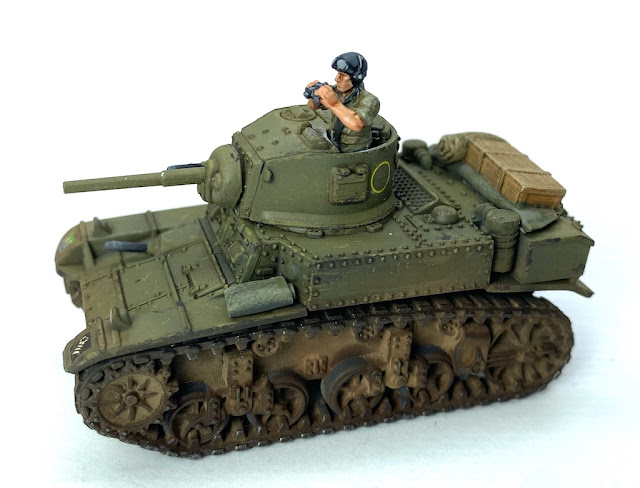







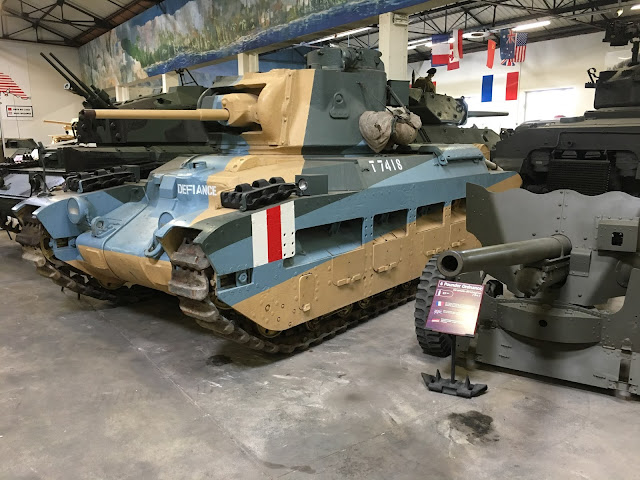
















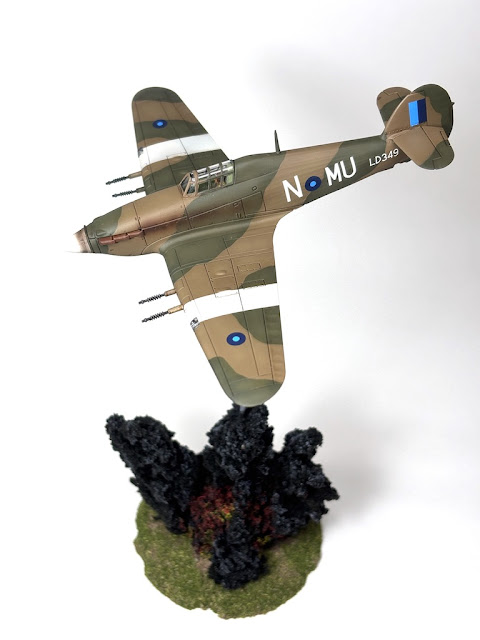




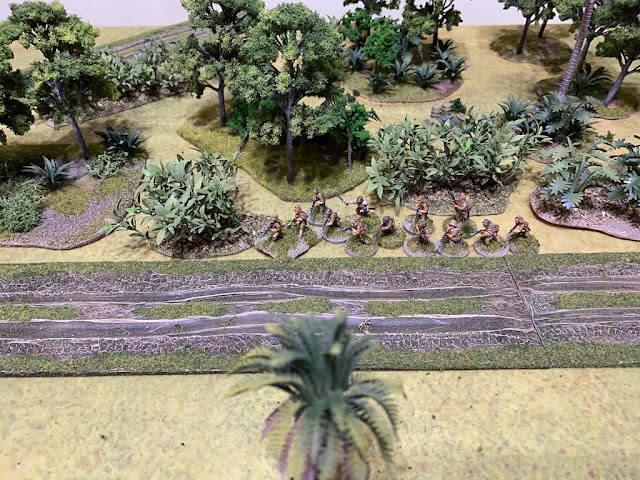
Another great post.
ReplyDeleteWith the Matilda tanks, the flamethrower variant was also used in the Borneo campaign.
Yes they were. I have a few others to add. Valentines had a brief and disastrous appearance in the Arakan and were used by the New Zealanders in the Pacific. They were also used in Madagascar along with Tetrachs, so if I want to get really funky I can do some Vichy French colonial units to fight them.
DeleteInteresting stuff. A great book to get is Brian Perrett's 'Tank Tracks to Rangoon.' It covers all the Burmese campaigns.
ReplyDeleteThanks. Yes, I read that book many years ago, it’s a good one.
DeleteGreat post once again! I was actually a little shocked by how off those Eureka heads look when compared with AB. Thanks also for the pointer towards Capitan miniatures. Haven’t come across them before
ReplyDeleteThe issue is with a few of the helmeted figures. As you can see, not only are the heads too big but some of the faces look like ogres and wouldn’t be out of place in a company of orks.
DeleteVery cool post with the pics of the real thing mixed in. And of course, your miniatures look great as well. 😀
ReplyDeleteVery interesting. Great work on your collection.
ReplyDelete